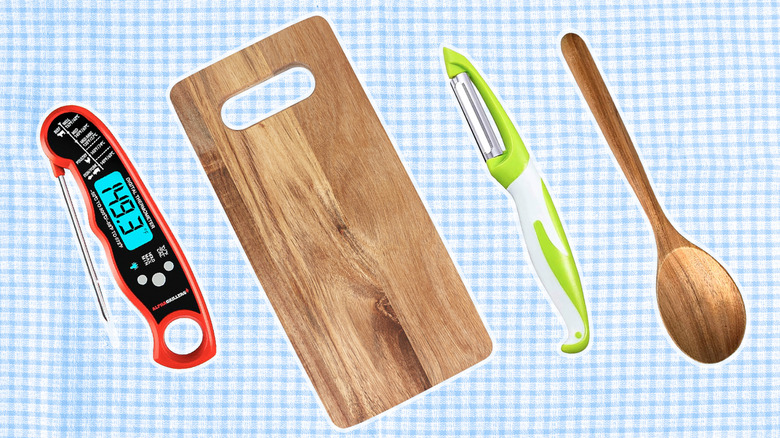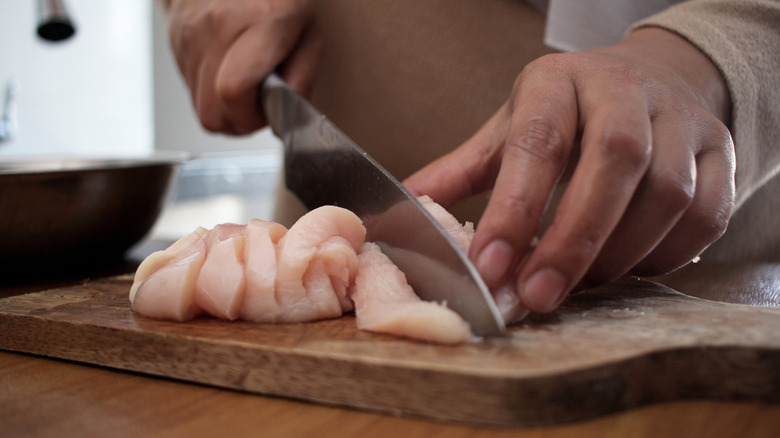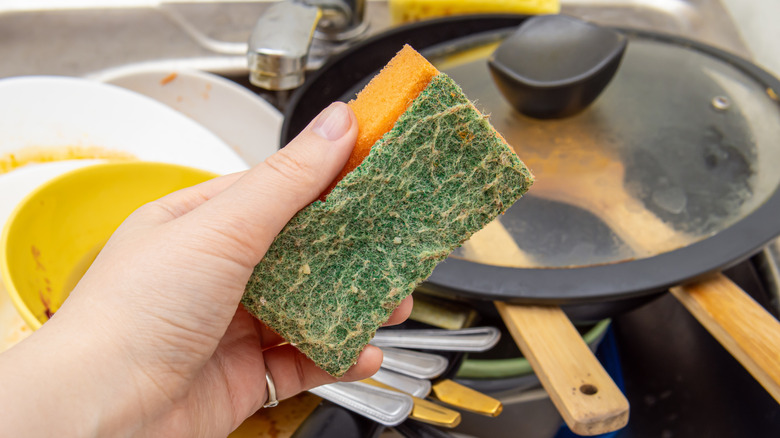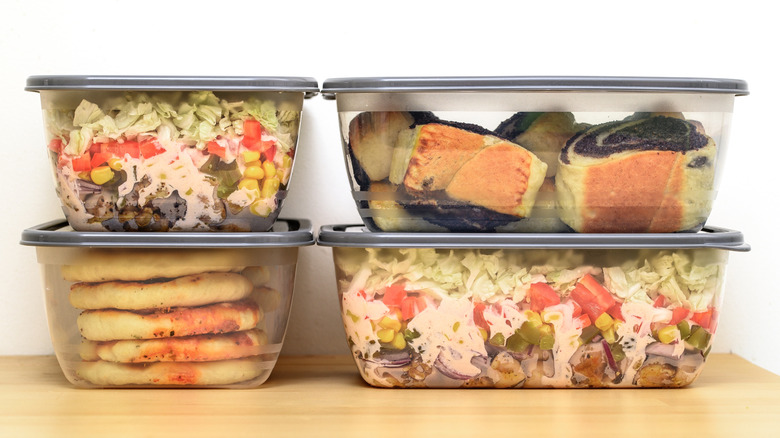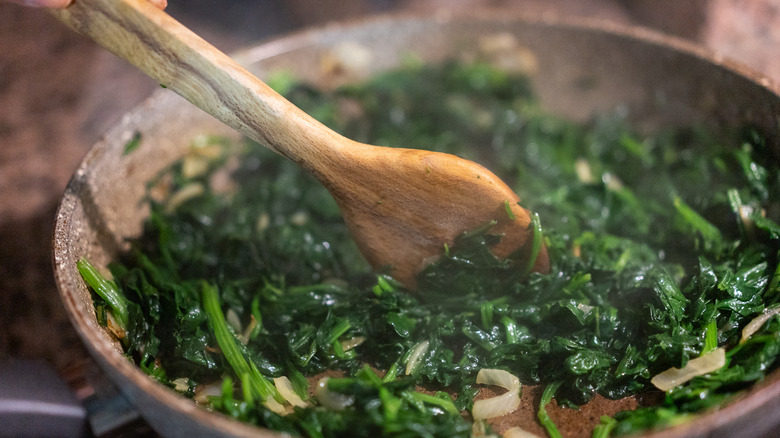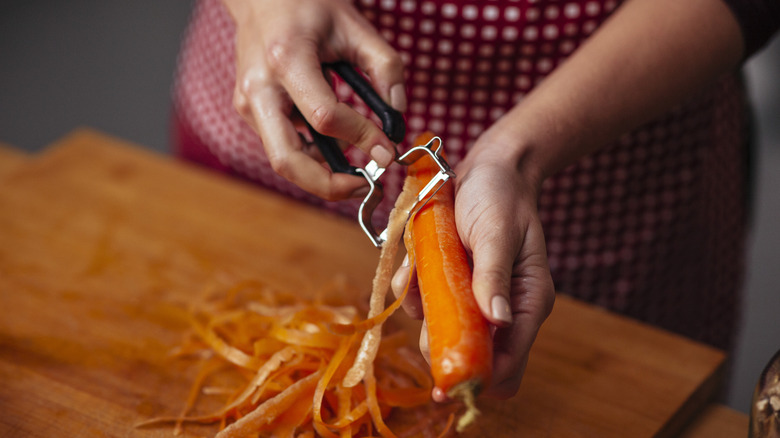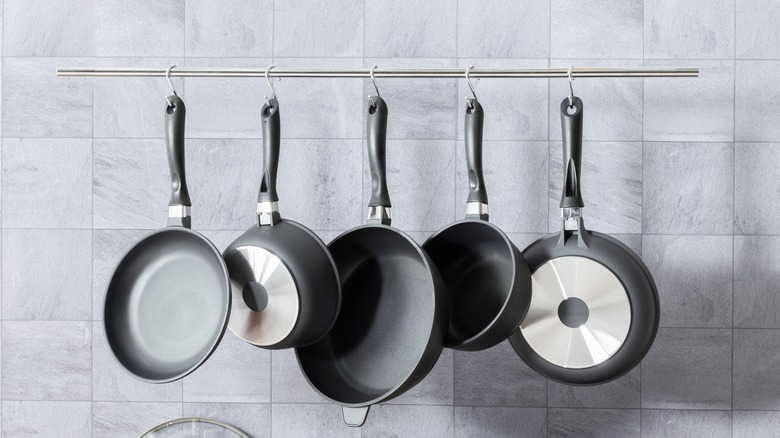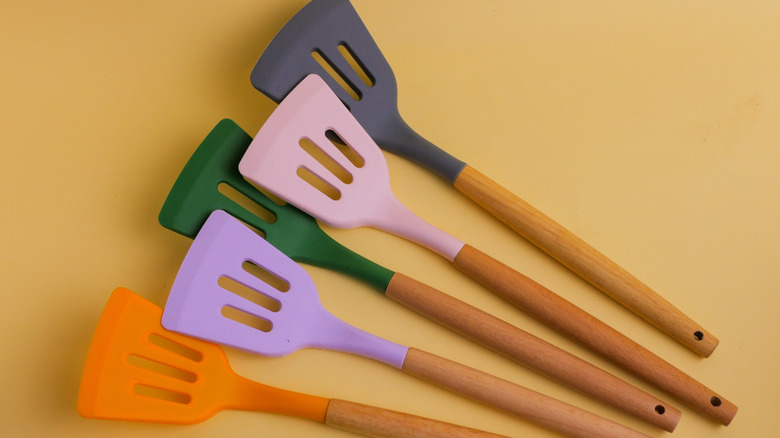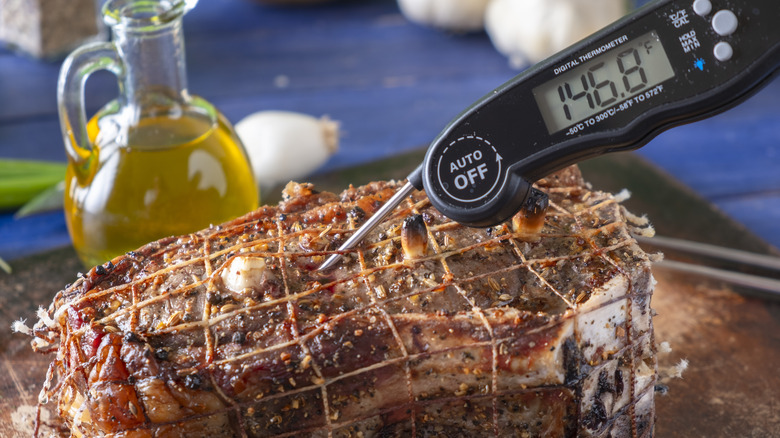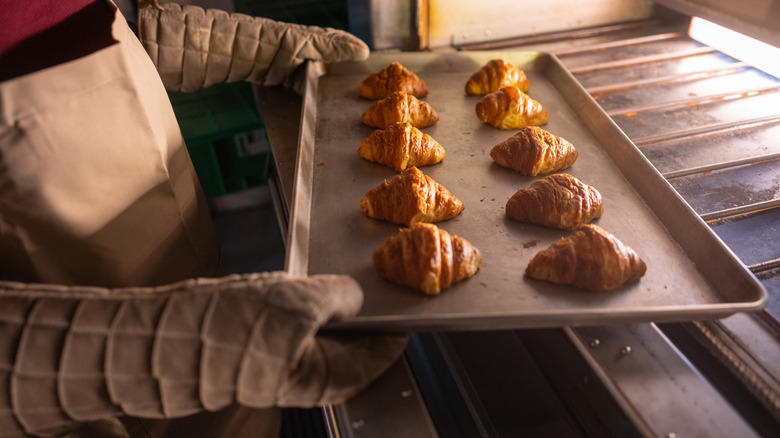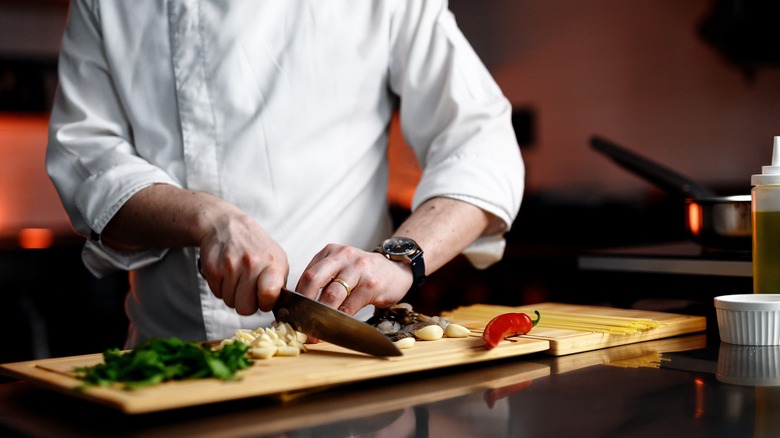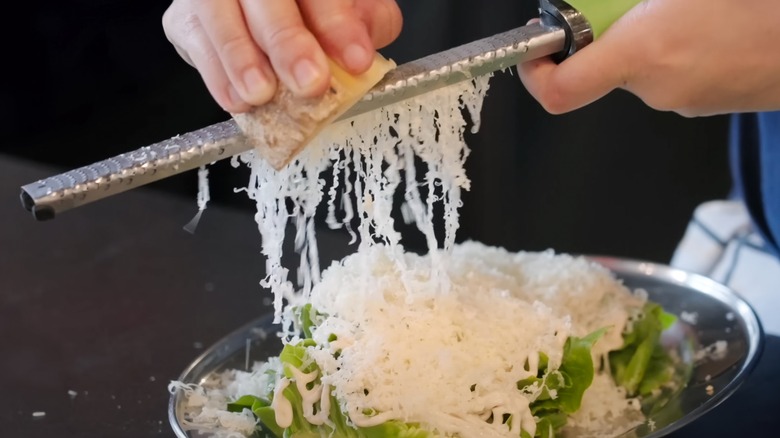Kitchen Tools You Should Be Replacing More Often
Whether you are baking sourdough bread in the early hours of the morning or preparing a sizzling steak for your loved ones, the right kitchen tools are key. They don't just simplify the cooking process; quality kitchen gadgets can both save time and keep you safe from nasty cuts and burns. On the other hand, a wooden spoon that has seen better days, a warped pan, or a grater with dull teeth can turn even the simplest kitchen task into a messy and chaotic ordeal.
With use, even the highest quality utensils can lose their spark, leaving you wondering whether they will live to see another day. Regular replacements won't just keep your kitchen in business, but ensure that your dishes turn out exactly how you want them. The trick lies in catching small dents, discolorations, or other signs of damage before they become a problem, downgrading your pot roasts and perfectly seasoned chicken-fried steak from mouth-watering to below average.
Not sure which of your kitchen tools needs an upgrade? We have done the legwork for you. Here are a few guidelines for the most commonly used kitchen tools that should help you set your kitchen in order.
Cutting boards
From precise knife work such as mincing garlic and chopping herbs to dicing onions and slicing vegetables, no job is too big or small for the humble cutting board. Found in pretty much every kitchen, cutting boards both simplify food prep and keep your countertops safe from knife marks. There are two basic types of cutting boards: wood and plastic. Plastic cutting boards win marks on convenience, affordability, and ease of cleaning. Meanwhile, their wooden counterparts are praised for their aesthetics and longevity.
Given that cutting boards see a lot of culinary action, it's important to know when it's time to bid them goodbye. And this isn't just because they may start to look like they have seen much better days — a scratched-up cutting board can be a safety risk, particularly when used to cut raw poultry or seafood. Knife marks can trap food particles, with the grooves giving bacteria such as E. coli, listeria, and salmonella the perfect environment to thrive. These bacteria can easily spread to other foods that you prepare on the same surface, putting you and your family at risk of nasty gastric problems.
When it comes to replacing a cutting board, there are two main considerations: the type of material it's made from, and how often it's put to work. On average, a plastic cutting board should be replaced once a year. Wooden cutting boards tend to be sturdier, only requiring replacement every few years. Of course, any cutting board that is warped, cracked, or stained or smelly after a good scrub should be replaced immediately.
Dish sponges
Let's set things straight: dirty kitchen sponges can be dangerous. In fact, they can turn into a petri dish for bacteria that can make its way to your kitchen surfaces, hands, and, eventually, food. The all-round kitchen essentials normally serve double duty — most of us use them not just to clean leftover bits of food from our plates but also to scrub stray grub from kitchen countertops. To make matters worse, dish sponges are frequently left damp and dirty beside the sink — the perfect environment for germs to multiply. If you don't believe us, a 2017 study published in Scientific Reports uncovered as many as tens of billions of bacterial cells living in just one cubic centimeter of sponge material.
The good news is that sanitizing your dish sponges on a regular basis can kill a lot of these pathogens. The best way to go about this is to boil your cleaning sponge for five minutes or microwave it on high for a minute or so. If you do go the microwave route, check that the sponge doesn't have any metallic fibers on the scrub pad and wet it before popping it in the appliance — otherwise things could turn nasty, burning your kitchen in the process. Alternatively, clean your dish sponge by dunking it in a solution of ¾ cup of bleach in a gallon of water for a few minutes before rinsing it well. Even with regular sanitizing, it's smart to replace your kitchen sponge every week or two, or even earlier if it gets slimy or smelly.
Plastic food storage containers
When it comes to keeping your perishables fresh and kitchen organization, plastic food containers need little introduction. They keep leftovers, snacks, and pantry staples fresh. They are also perfect for storing soups, sauces, or cooked meals in the refrigerator and freezer. But while they may be convenient, these reusable storage tubs can actually attract bacteria instead of protecting your food from the elements. Repeated microwaving (if the container is microwave-safe), harsh scrubbing, and general wear can make them less sanitary than you might think.
There is no universal rule for when a plastic container should be replaced, but it's worth considering a swap-out somewhere around the six-month to one-year mark. It all depends on the durability of the plastic the Tupperware is made from and how often you use it. Any cracks, scratches, and cloudy discoloration should be taken as a warning that the containers may have outlived their usefulness — and, in fact, be a perfect setup for bacterial buildup. As an aside, try to keep your plastic storage containers away from acidic or oily foods, since these can wear down the plastic. Once you decide that enough is enough and your plastic container has definitely seen better days, consider replacing it with something sturdier and more environmentally-friendly, such as glass, ceramic, or stainless steel.
Wooden spoons
There is a good reason why so many professional chefs stick with wooden spoons: They are eco-friendly, look great, and are relatively durable — particularly if made from sturdy materials such as teak, maple, or olive wood. They are gentle on nonstick and enamel cookware, and they stay cool when used to stir a simmering tomato sauce (which you can easily make without a blender), bubbling pumpkin and spice soup, or thick beef stew. Plus, unlike plastic, wooden spoons don't chemically react with acidic foods, so you can use them with tomatoes or lemon juice without worrying about any funky aftertaste in your food.
Even though wooden spoons generally last for years, there are small — and relatively effortless — things you can do to prolong their life. Avoid placing them in the dishwasher, as high temperatures and too much moisture can cause them to warp and crack. It's also a good idea to regularly coat wooden utensils with food-grade mineral oil or beeswax to stop the wood from splitting.
No matter how well you treat them, even the trustiest wooden spoons eventually wear out — it's just a fact of life. They can split, flake, stain, and absorb food odors. Any visible damage to the utensils isn't just an eyesore, it can also make them a health risk — after all, any cracks in the wood can trap food particles and bacteria. If a spoon looks or smells like there is something wrong with it, that's probably the case.
Vegetable peelers
Sure, you could peel vegetables with a kitchen knife. But why would you when a good kitchen peeler can take the skin off your veggies faster and with less waste? And while it may seem like a simple gadget, a good peeler can do a lot more than just skin a potato or a carrot. It can zest citrus, shave thin ribbons of zucchini for salads, and even make those cute vegetable garnishes for dinner parties.
Given that they rely on their sharpness to glide smoothly over produce, vegetable peelers should be replaced once they start snagging and tearing food. That's why celebrity chef Ina Garten routinely finds herself replacing peelers. The most obvious sign that this essential kitchen tool is due for an upgrade is when it starts feeling clunky, requiring more force to strip away skin. Garten points out that rust is another clear indicator that your vegetable peeler has served its time and now belongs in the trash can.
While buying a new peeler might seem like a hassle, putting it off can have unpleasant consequences, as highlighted by one Quora contributor. "There is nothing more dangerous than a dull knife," they wrote. "And that goes for the simple veg peeler. I learned the hard way by pressing too hard and peeling off a piece of my nail and finger tip. Replace as soon as they do not glide and peel smoothly ... probably once a year or sooner."
Nonstick cookware
There's no question about it – few who abandon their old aluminum pots and pans for nonstick cookware ever look back. Just as their name suggests, the main advantage of nonstick cookware is how effortlessly it releases food. Whether you are frying eggs or making a quick and easy stir-fry, nonstick also lets you cook with less oil, which translates to less fat and healthier dishes.
Nonstick cookware owes its magic to a special coating that keeps food from sticking to its surface. However, even a premium nonstick surface can deteriorate over time. In fact, depending on its quality, nonstick cookware should be replaced every three to 10 years. One sure sign that you are due for a new pot or pan is a scratched coating. The situation is even more urgent if the finish is flaking off, since it could easily end up in your food. Plus, considering that some nonstick cookware contains per- and polyfluorinated compounds (shiver), it's best not to take any chances.
To make sure that your nonstick pots and pans go the distance, use them only on moderate heat, since anything above 400 degrees Fahrenheit can damage their coating. Always let pans cool before washing them by hand with soap and water. Finally, use only plastic, wood, or silicone utensils when stirring food in nonstick kitchen gear, since metal tools can easily scratch and ruin its protective surface.
Silicone spatulas
Kitchen utensils made from silicone, or synthetic rubber, offer an impressive mix of benefits that can make routine kitchen tasks a little bit less taxing. More specifically, silicone can handle temperatures up to 428 degrees Fahrenheit, making the material ideal for spatulas used to stir boiling sauces and soups. An added bonus is that unlike metal utensils, silicone spatulas won't scratch your nonstick or cast-iron pots and pans. Plus, unlike wood or plastic, silicone doesn't absorb flavors, colors, or odors. Silicone spatulas are also flexible enough to scrape every last bit of batter or sauce from bowls — a clear bonus for those of us mere mortals prone to licking the bowl.
While silicone spatulas are more durable than their plastic counterparts and require less maintenance than wooden kitchen utensils, they don't last forever. As a general rule, a silicone spatula should be upgraded every three to five years, depending on its quality and how frequently it's deployed. Of course, any cracks or loss of firmness before that time mean that the spatula is due for an update. To extend the lifespan of your kitchen spatula, wash it by hand rather than in the dishwasher, even though the utensil may be advertised as dishwasher-safe.
Digital meat thermometers
While visual signs such as browning or sizzling can help to determine the doneness of food, they are not always all that reliable. This can be particularly concerning when cooking foods like poultry, which need to come to a certain minimum temperature to be safe to eat. Whether you are preparing crispy-skinned roast chicken or whipping up a pork tenderloin, a quality digital meat thermometer is a great way of taking the uncertainty out of your culinary endeavors.
Just like many other gadgets, digital meat thermometers can become less accurate over time, especially if they get a lot of mileage. As a general guide, a meat thermometer should be replaced every one to two years. Signs that it's time to hit up the store include physical damage or noticeably slower readings.
There are several simple steps you can take to extend the lifespan of your digital thermometer. While this can be easy to forget, it's important to calibrate it from time to time to ensure accurate readings — check the gadget's instruction manual for the best way to do this. As a rule of thumb, a monthly calibration should do the trick. In addition, always store your meat thermometer in its protective case, and handle it with care to prevent any accidental knocks or falls that could damage the device.
Oven mitts
While it might be tempting to grab a kitchen towel to pull your baking trays out of the oven, this shortcut puts you at risk of some serious burns. Today's home ovens reach temperatures of up to 500 degrees Fahrenheit — that's blisteringly hot and unforgiving on bare skin. This is where oven mitts can be a lifesaver. Typically made from cotton with heat-proof padding (although silicone ones also exist), oven mitts protect your entire hand and wrist. They also provide a secure grip on hot trays, which means that you are much less likely to accidentally drop them.
Given that oven mitts do such an important job, keep an eye on any wear and tear that could put your hands at risk. That said, when it comes to kitchen mitts, there is more to look out for than just holes and thinning fabric. Dirty oven mitts can be a breeding ground for bacteria. A 2002 study entitled "Hygiene issues associated with food service potholders and oven mitts" found alarming levels of bacteria on both the outside and inside of oven mitts, indicating that they could contaminate both food and your hands (via ResearchGate). To ensure that you are not spreading pathogens all over your kitchen, wash your oven mitts in the washing machine every seven to 10 days, and toss them as soon as you notice any visible signs of damage.
Baking sheets
Even the best-made baking sheets have an expiration date, especially if they do regular rounds in the oven. Repeated heat exposure, bubbling grease, and thorough scrubbing at the end of the day can wear them out faster than you think. Typically, you will want to swap out your baking sheets every two to five years, but this may vary depending on their quality and how often they are put to work.
There are several obvious giveaways that your baking sheet may need an urgent upgrade. Any dents or cracks may seem like a purely aesthetic concern, but they can actually affect how evenly your food cooks. Similarly, any discoloration or burned areas on the baking sheet indicate wear that can affect the flavor of your baked chicken wings or zucchini casserole. Interestingly, darker spots on the pan trap more heat, which can brown food faster than you might expect. Finally, any damage to the nonstick coating on a baking sheet is a huge no-no since the loose flakes of coating can easily make their way into your food.
Kitchen knives
From mincing garlic to slicing bread and carving roast beef, kitchen knives are indispensable when it comes to both prepping ingredients and serving up feasts. This is why keeping them in top shape is such a big deal. A sharp blade takes the brute force out of slicing, chopping, and dicing. A dull one can turn even simple kitchen tasks into a monumental struggle.
While many of us believe that a set of quality kitchen knives should last a lifetime, this is a pipe dream you are best to forget before you slice your next tomato. In reality, even the best knives won't go the distance if you don't look after them. Still, a quality set of knives should perform reasonably well for at least a decade, provided that you hone them — or realign their edges — after each use and sharpen them every two weeks.
Even though regular knife tune-ups are essential, it's important to know that every time you sharpen a knife, you remove a tiny layer of metal from the blade. This means that in the long run, even the highest quality knives will give up the ghost. In addition, any obvious signs of damage, such as a chipped blade or broken handle, are about much more than just cosmetics — they can make the knife more difficult to control and increase the risk of slipping and accidents. Another red flag is a knife that stays rusty or dull no matter how much you sharpen it.
Microplane graters
Designed to handle citrus peels, hard cheeses, or even chocolate, Microplane graters can turn even the toughest ingredients into delicate shavings. Unlike traditional graters, they are equipped with ultra-sharp etched blades that slice — rather than tear or shred — food. The bad news is that even the sharpest grating surfaces lose their mojo over time, especially with heavy use.
It's easy to tell when a Microplane's teeth become dull because they start scraping and mashing ingredients. This lack of uniformity can be more than just an inconvenience — a dull Microplane grater can easily turn into a kitchen safety hazard. An old grater requires more pressure to get results, putting your hand right in the line of fire if it happens to accidentally slip.
There are no hard and fast rules about replacing Microplane graters — their lifespan depends on how often you use them and the texture of the foods you grate. For instance, if you regularly grate hard ingredients like horseradish in a professional kitchen environment, expect the Microplane to go dull in around a month. Softer ingredients, such as citrus, cheese, and garlic are much more forgiving, which means that your Microplane should hold up for a year or longer.
